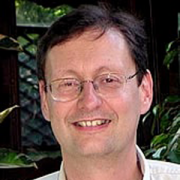At first sight, the interest of an Austrian in cultural psychiatry seems to be hard to explain. Although Austria has a certain tradition in anthropology (the school of Father Wilhelm Schmidt), – having no indigenous populations and no colonies – it has not developed a tradition in culture psychiatry.
So this interest must have evolved along other – atypical – pathways. Since my pre-school years I was fascinated by old or “strange” cultures, a fascination that has stayed with me my whole life. After finishing school, I first planned to study cultural history, but after a few months time to think about my professional future, I decided to study medicine, knowing even then that I wanted to become a psychiatrist.
When I started medical school in Vienna, psychiatry was for me a synonym for psychoanalysis. Reading (more or less) the complete works of Sigmund Freud, Totem and Taboo made me curious, but also left me feeling helpless. During the next several years, I was preoccupied with books by Mario Erdheim, Paul Parin, Paul Morgenthaler and Maya Nadig, relating psychoanalysis to anthropology, and planned to undertake research in ethno-psychoanalysis in the future. So, after my graduation in medicine, I started my training at the Psychiatric Clinic of Vienna University. At the same time, I began to study anthropology and undertook my own psychoanalysis.
From 1989-1991, I spent three years of my training in a rehabilitation centre for schizophrenic patients, an experience which has had an ongoing influence on my professional and scientific career. Dealing with these patients stimulated my interest in the psychopathology of psychoses; an interest, which has continued to motivate my clinical and research activity ever since.
In 1990, I met Dr Haroon Chaudhry from the University Clinic in Lahore, Pakistan. He has completed part of his training in psychiatry at the University Clinic in Vienna. In 1992 we decided to establish the “Vienna research group in cultural psychiatry”. During the following years, I have been able to visit Pakistan four times, to coordinate our collaborative research projects.
Our first published research findings generated considerable interest in the scientific community. Our collaborative research group has expanded over the years, and now comprises psychiatrists from eight countries; Austria, Poland, Lithuania, Georgia, Pakistan, Ghana, Nigeria, and Namibia.
Since 1994, I have been working in close cooperation with Dr Alexander Friedmann, head of the Transcultural Outpatient Department of the Psychiatry Clinic of Vienna University, who is mainly treating psychiatric disorders among refugees and migrants from former Yugoslavia, the former USSR, Turkey, and Sub-Saharan Africa.
Since 1994, I spend half of my working time at the High Security Göllersdorf, Hospital, a facility for mentally ill offenders deemed to be not guilty by reason of insanity. Under the influence of my mentor, Dr Hans Schanda, the head of the High Security Hospital, forensic psychiatry has become an important part of my scientific interests.
Following an invitation from Dr Haroon Chaudhry to come to Lahore in 1995, I attended my first annual meeting of the WPA-Transcultural Psychiatry Section. In 1997, I met Dr Goffredo Bartocci, with whom I share a fascination in religious issues in cultural psychiatry. As a consequence, I became a “natural” part of the transcultural psychiatry conferences organized by him after that first meeting in Lahore.
In April 2006, I have the honour to organize the annual meeting of the WPA-Transcultural Psychiatry Section in Vienna, in cooperation with the Society for the Study of Psychiatry and Culture. The general theme is “Future directions of cultural psychiatry”. I hope to see all of you at this conference in Vienna.
October 5, 2006

